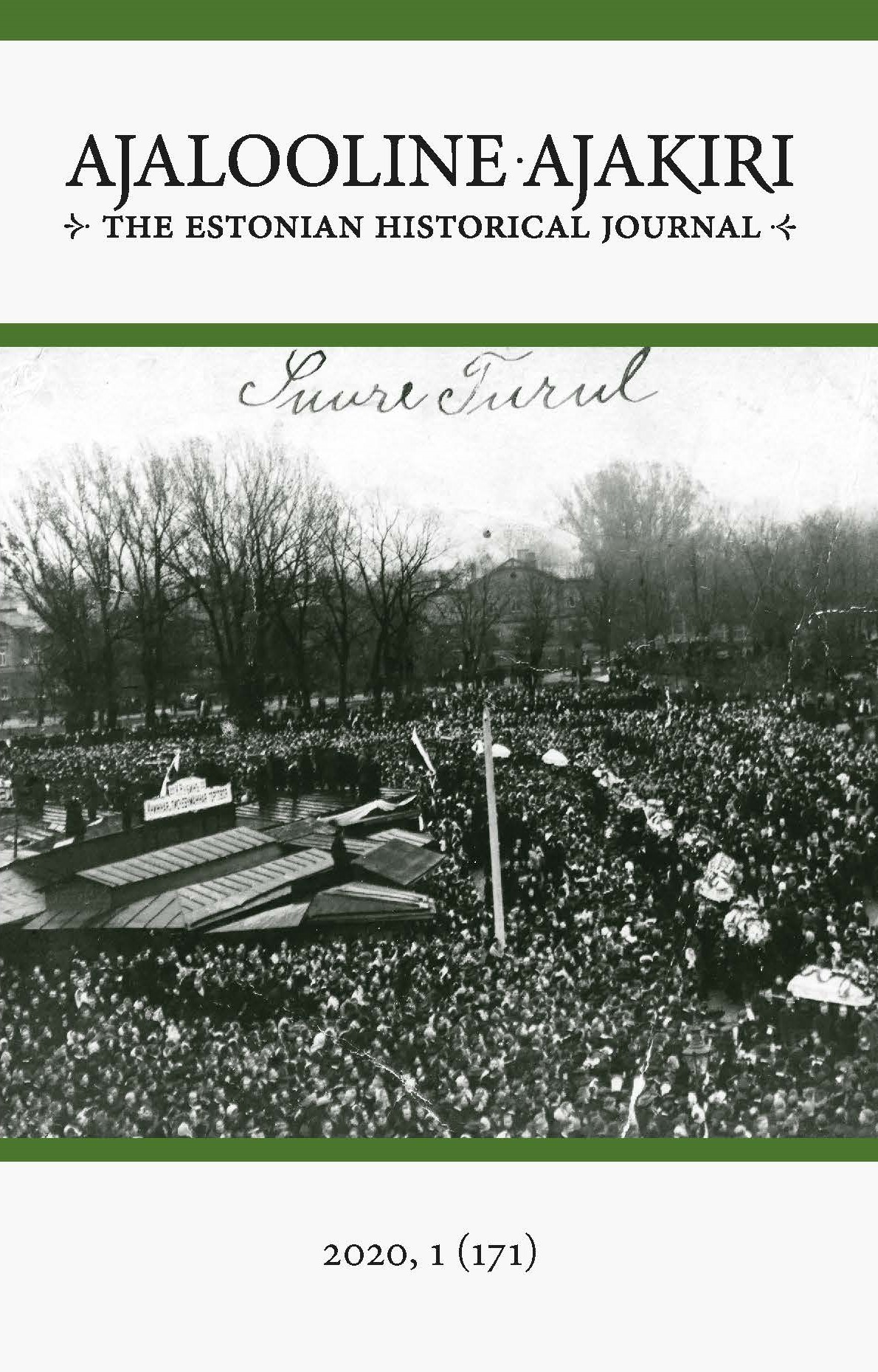Inimohvritega revolutsioonisündmused Eesti linnades 1905. aastal [Abstract: Revolutionary events with casualties in Estonian towns in 1905]
DOI:
https://doi.org/10.12697/AA.2020.1.01Keywords:
Revolution of 1905, Russian Empire, Estonia, urban historyAbstract
The Revolution of 1905 had an enormous impact on many nations in the Russian Empire. In order to study the society of the Russian Empire during the Revolution of 1905, many aspects need to be considered. Besides political and social changes, it is also important to study how and why violence occurred during the Revolution.
Violence had many sources in the Revolution of 1905 in the Russian Empire. One such source was the revolutionary political parties, whichsaw acts of violence as a means for realising their political agenda. Revolutionary parties formed armed groups, which attacked the authorities and other people. Bombs exploded in many places. Revolutionaries also gave speeches and printed various texts calling upon the masses to engage in violence against the authorities. The authorities also used violence in situations where it was unnecessary for defending themselves or protecting the lives of others. On many occasions, soldiers opened fire on political demonstrations or crowds of strikers. Although the authorities finally managed to supress the Revolution using violence, it is also evident that during the Revolution, the use of violence by the authorities played a role in the radicalisation of the revolutionary movement. It is well known that the shooting of demonstrators in St Petersburg on 9 January 1905 became a catalyst for the Revolution. Later, similar events took place in many parts of the Russian Empire.
In many areas of the Empire (Poland, Latvia, etc.), large numbers of people were killed by the authorities and by the people participating in the revolutionary movement. This study reveals that almost all of the people who were killed during the Revolution of 1905 in Estonia died at the hands of the authorities. There were 102 known victims of the Revolution in Estonian towns, and all of them were killed by the authorities. Most of them died on 16 October when soldiers opened fire on a peaceful workers’ demonstration in Tallinn. There was a total of five revolutionary events in Estonian towns where people were killed. Three of them took place in Tallinn, one in Tartu and one in Narva. All five events took place during workers’ strikes. Events in the countryside need to be investigated more thoroughly, but as far as is known, it seems to have been extremely rare for revolutionaries or participants in uprisings to kill anyone in the countryside as well. We know with certainty that only one German landlord (Arthur von Baranoff) was killed in Estonia in 1905. The punitive squads that were sent to Estonia by the authorities in December of 1905 killed hundreds of people. So although the events in the countryside need further research in order to obtain more reliable data, it is clear that most of the victims of the Revolution of 1905 in the countryside were killed by the authorities.
It is exceedingly difficult to point out exactly why the revolutionary movement in Estonia was less violent than in many other areas of the Russian Empire. Estonia and Latvia were in a relatively similar political situation, but the Revolution became much more violent in Latvia. This may be due to the fact that the socialist movement was not as widespread in Estonia as it was in Latvia. Socialist organisations in Estonia were also weaker than in Latvia. An event already occurred on 13 January in Riga in which soldiers opened fire on a crowd of people. It is possible that this contributed to the early radicalisation of the revolutionary movement in Latvia. Tallinn’s City Council may also have played an important role in keeping the peace. Estonians had won election to the City Council of Tallinn for the first time in 1904. It is likely that Estonian workers found it easier to communicate with the Tallinn’s municipal government than Riga workers with their local city government that was still dominated by Germans. Tallinn’s municipal government did not position itself against the workers’ movement and in some cases tried to work together with the representatives of the workers. It is possible that this also played an important role in revolutionary events in Tallinn.

